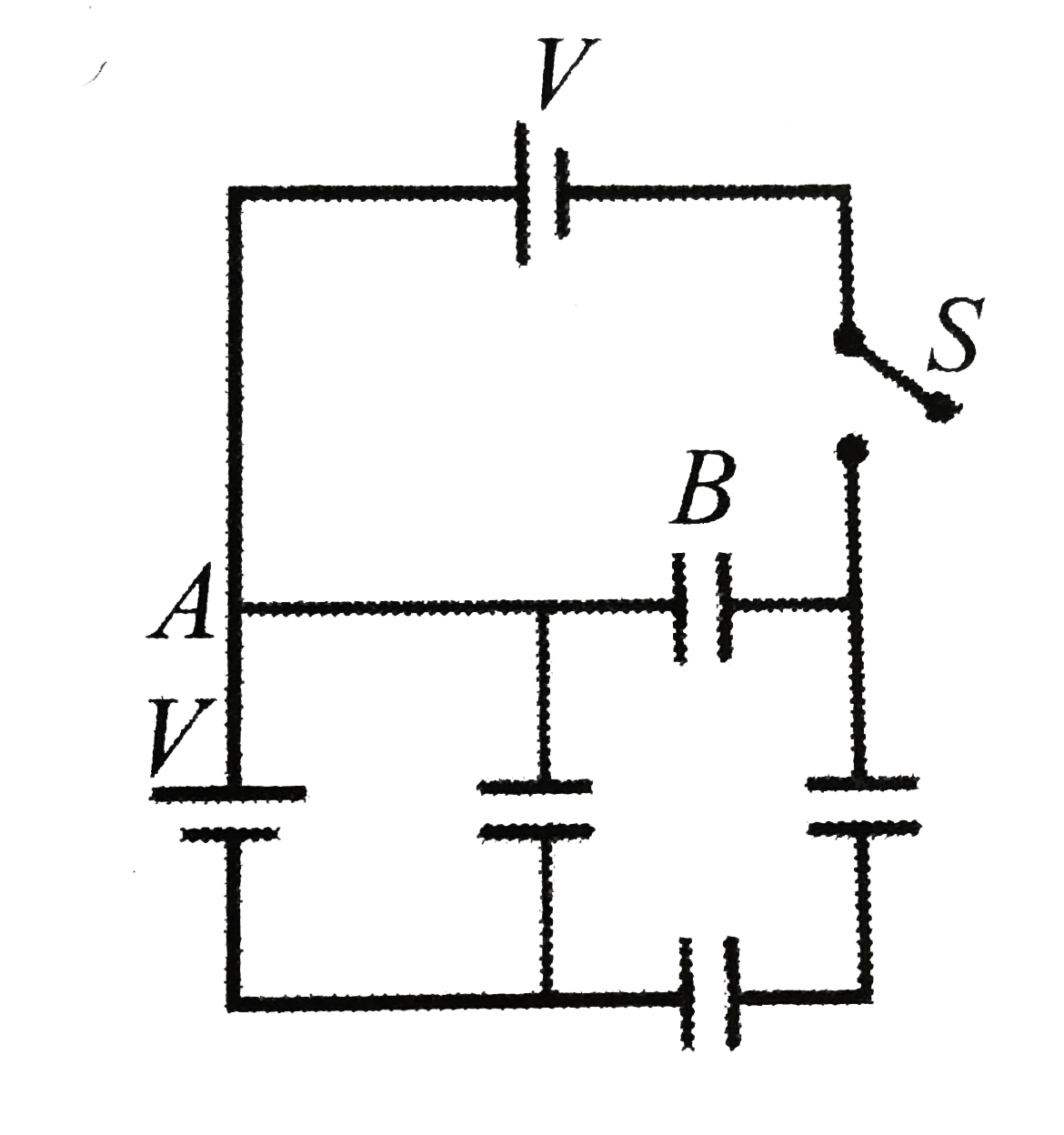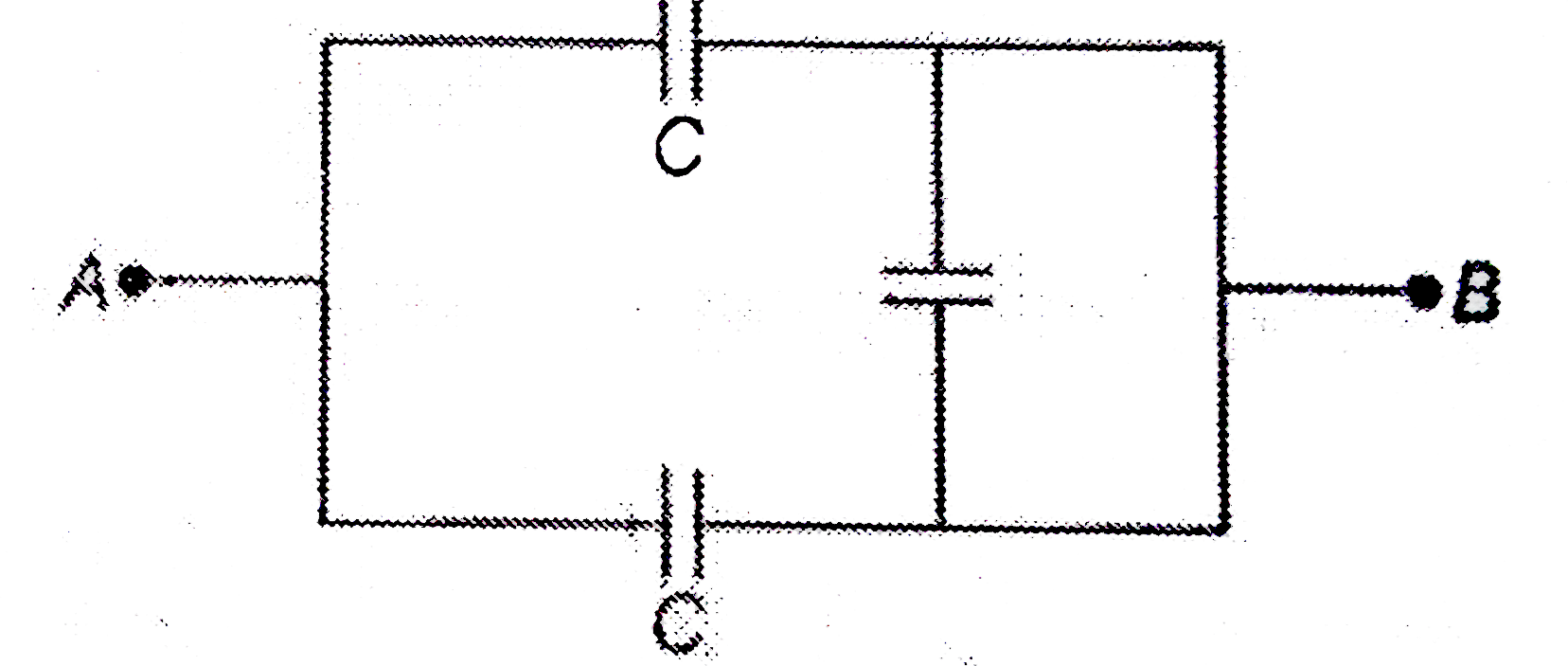Find the charge that will flow through the wire A and B if the switch S is closed. The capacitance of each capacitance of each capacitor shown in the figure is C.

CV
CV/3
zero
2CV/3
The correct Answer is:D
d. Charge flowing from A to B :

x= change in charge on capacitor 1
=CV−CV3=2CV3
Topper's Solved these Questions
- MISCELLANEOUS VOLUME 3BOOK - CENGAGE PHYSICSCHAPTER - MISCELLANEOUS VOLUME 3EXERCISE - Multiple Correct Answer type
109 Videos
- MISCELLANEOUS VOLUME 3BOOK - CENGAGE PHYSICSCHAPTER - MISCELLANEOUS VOLUME 3EXERCISE - Assertion and Reason Type
8 Videos
- MECHANICAL PROPERTIES OF SOLIDSBOOK - CENGAGE PHYSICSCHAPTER - MECHANICAL PROPERTIES OF SOLIDSEXERCISE - Question Bank
4 Videos
- MISCELLANEOUS VOLUME 5BOOK - CENGAGE PHYSICSCHAPTER - MISCELLANEOUS VOLUME 5EXERCISE - Integer
12 Videos
Similar Questions
Knowledge Check
The equivalent capacitance of the combination of three capacitors each of capacitance C between A and B as shown in figure is
 ACB2CCC/2D3C
ACB2CCC/2D3CFind the capacitance between P and O. Each capacitor has capacitance C.
 .A2CB3CC8CD6C
.A2CB3CC8CD6CThe effective capacitances between points A and B is (the capacitance of each of the capacitors is C)
 ACBC/2C36C/17D42C/17
ACBC/2C36C/17D42C/17
What charges will flow through A,B and C in the direction shown in the figure when switch S is closed?

View SolutionThe equivalent capacitance of the combination of three capacitors each of capacitance C between A and B as shown in figure is

View SolutionFind the capacitance between P and O. Each capacitor has capacitance C.
 .
.
View Solution(i) Find the total charge flown through the battery in the arrangement shown in figure after switch S is closed (initially all the capacitors are uncharged).
(ii) Find out final charge on each capacitor.

View Solution(i) Find the total charge flown through the battery in the arrangement shown in figure after switch S is closed (initially all the capacitors are uncharged).
(ii) Find out final charge on each capacitor.

View Solution

